Basket Flowers: Grow & Care for Centaurea americana
Written by Iris
Aug 16 2021
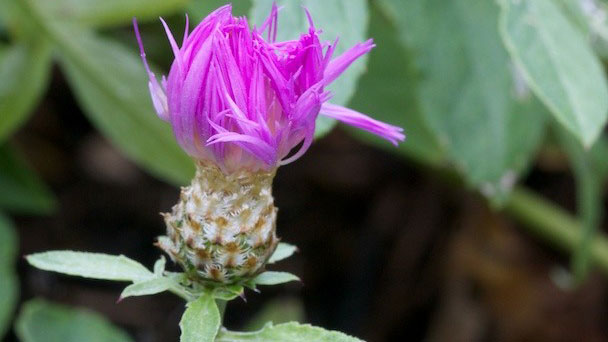
Native to the southern central United States and northeastern Mexico, Basket Flowers (Centaurea americana) is often cultivated for its showy flowers, and can sometimes be found outside its native range as an escape from cultivation. Basket Flowers (Centaurea Americana) is a sweet, honey fragrance and makes brilliant cut flowers. Basket Flowers (Centaurea Americana) resembles the thistles but lacks their prickly characteristics. This is a showy, easily cultivated wildflower.
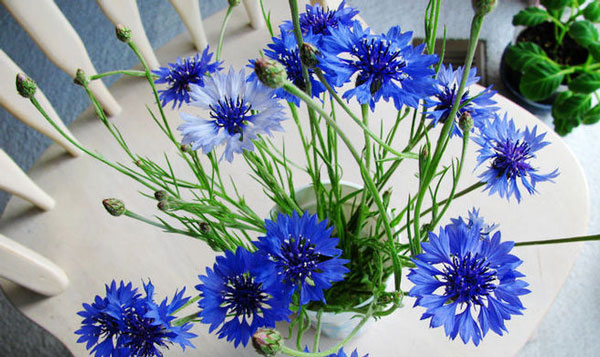
In order to effectively improve the germination rate, it can be treated to accelerate the germination, put the paper towel on the container, moisten the water to keep wet, the water does not need too much, just cover the paper towel. Place the seeds on a paper towel, cover them with plastic wrap, and place them in a warm place. Sow until the seeds are white.
Transplant seedlings into the garden when they are about 4 inches tall. Annuals may self-seed. Contain the spread by deadheading, but understand this process will deprive birds of the much-loved seeds. Perennial centaurea spreads very quickly; control its growth in a garden bed by digging up and dividing the plants every 2-3 years.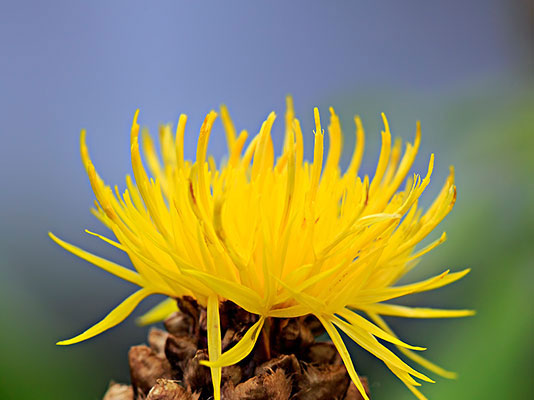
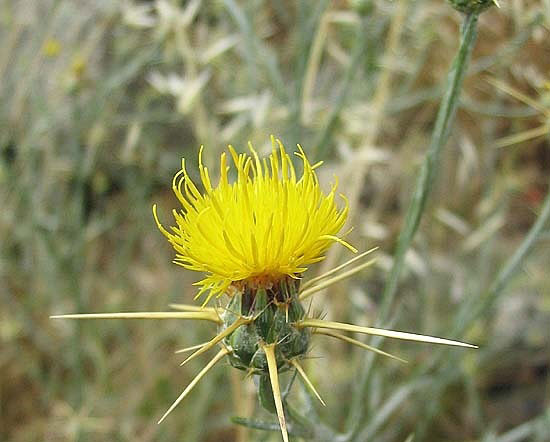
The diseases of knapweed mainly include sclerotia, downy mildew and shrinkage.
Sclerotinia, mainly harm stem base, in the case of high temperature, stem often appear water stains to light brown spots. Control methods: to avoid plants planted too dense; The sick plant should be immediately pulled out and concentrated incineration; The condition is serious when can use 70% tobujin wettable powder 1000 times liquid spray plant in the lower part.
When downy mildew occurs, irregular light gray to light red spots appear on the leaves, and high humidity is conducive to disease occurrence. Prevention and treatment: timely treatment of the disease strains found; Make the basin around the soil slightly dry; When the disease can be sprayed 1:1:100 Bordeaux liquid, or 65% of the zinc wet-sex powder 500-800 times liquid and other agents to control.
Curving disease, the susceptible plant leaves twisted atrophy, leaf necrosis. Prevention and control methods: found the disease strains, timely pulling out, centralized destruction; In daily maintenance, should try to avoid branch fluid contact infection.
Small infestations and single plants can be effectively managed by hand pulling or digging. If flower parts have formed, be sure to carefully bag and dispose of all parts when manually removing the species. Mowing is not effective, as the plant will flower and set seed below the mow level.
For large or well established infestations, it is most effective to apply a selective, broadleaf herbicide prior to the plant flowering.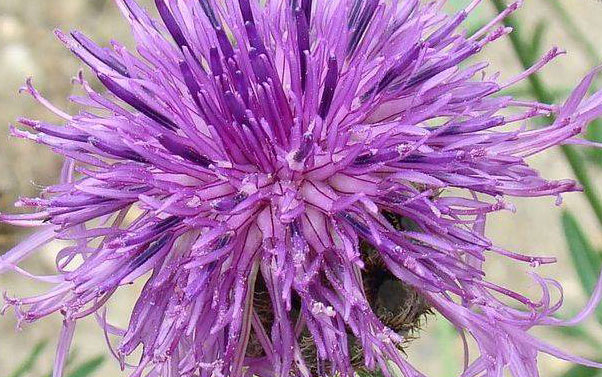
'Aloha Blanca' - Basket flowers normally feature pink-purple petals, but this type has unusual white flowers.
'Aloha Rosa' - Features blooms with a smoky pink shade. The inner petals sometimes have eye-catching black tips.
When to Grow Basket Flowers (Centaurea americana)How to Grow Basket Flowers (Centaurea americana)How to Care for Basket Flowers (Centaurea americana)Basket Flowers (Centaurea americana) FAQ
When to Grow Basket Flowers (Centaurea americana)
The temperature around the seed should be maintained at 18-25℃, so spring and autumn are suitable. Spring is in February-April, and it is best to make sure it is as early as possible.Choose Autumn (late September), and the advantage of autumn is even greater.
How to Grow Basket Flowers (Centaurea americana)
Steps for Basket Flowers (Centaurea americana) Propagation with Seeds
Start centaurea seeds indoors about a month before the average last frost in your area. Sow seeds in individual peat pots or seed-starting flats filled with commercial seed-starting mix. Cover the seeds with a ½-inch layer of soil mix, and spritz with water to moisten the soil. Generally about 10-13 days after sowing can germinate, 15 days can grow leaflets, but to ensure the right environment, the environment is not appropriate if the germination time can not be guaranteed. Germination conditions have little to do with light, when selecting seeds, use full, well developed, but also ensure that the loam inside is wet, too dry to grow, placed in a cool environment, if necessary, you can also use black cloth cover, create a dark environment to help germinate faster.In order to effectively improve the germination rate, it can be treated to accelerate the germination, put the paper towel on the container, moisten the water to keep wet, the water does not need too much, just cover the paper towel. Place the seeds on a paper towel, cover them with plastic wrap, and place them in a warm place. Sow until the seeds are white.
Transplant seedlings into the garden when they are about 4 inches tall. Annuals may self-seed. Contain the spread by deadheading, but understand this process will deprive birds of the much-loved seeds. Perennial centaurea spreads very quickly; control its growth in a garden bed by digging up and dividing the plants every 2-3 years.

How to Care for Basket Flowers (Centaurea americana)
Light
The Basket Flowers (Centaurea americana) is a long-sunshine plant, which likes sunshine and does not tolerate shade and dampness. It must be grown in a sunny place. Always take the flowers out in the sun. Especially in the light time short and dry winter, more need to add enough light, you can put the Basket Flowers (Centaurea americana) in a sunny place indoors, in order to meet the needs of flowering. Although Basket Flowers (Centaurea americana) like light, but it avoid strong light, so in the summer temperature is too high, the sun is too strong, to carry out appropriate shade work, avoid long time of direct sunlight, so not conducive to the growth of the plant, causing leaves yellow, coke, can receive some scattered light can be.Soil
Basket flowers are tolerant of a wide range of soil types, including sandy, loamy, and clay, they just need it to be well-draining. They aren't too fussy about pH levels either, although slightly acidic to neutral levels seem to be appreciated the most.Water
If you live in a dry area, basket flowers may be a good choice. Once established, they are drought-tolerant and can cope well in dry conditions. However, if they still get enough water in the winter and spring, their growth should be more impressive. Basket Flowers (Centaurea americana) is not resistant to shade and dampness, so generally watering once a day can meet its needs, but in the summer heat, high temperature, evaporation is relatively large, you can irrigate water in the morning and evening, in order to meet the needs of water, but pay attention not to water too much, to avoid water in the basin. Basket Flowers (Centaurea americana)s cannot tolerate shade and dampness, so water just enough each time during the growing season to avoid too much moisture and root rot.Temperature and Humidity
With their drought-tolerance, it's no surprise that basket flowers do well in Mediterranean-style climates. They can also handle temperate and subtropic weather.
Fertilizer
Basket Flowers (Centaurea americana) is fond of much fertilizer, but still want to follow "apply thin fertilizer, often fertilize" principle. In the growing period, fertilization is more strict, to ensure that every half a month for a liquid fertilizer, but it should be noted that in the process of fertilization should pay attention to balanced nutrition, avoid the amount of nitrogen fertilizer caused by the lack of phosphorus and potash fertilizer, so as to ensure that the plant is stronger, stem firm, more flowers, flowers are more beautiful. In the growth period, it is generally once a month to apply fertilizer, but it must be thin, when the leaves are overgrown, to reduce the application of nitrogen fertilizer, until the flowering can be applied more phosphate and potash, so as to obtain large diameter flowers.Pruning
If you want to see the most impressive growth in terms of branches and blooms, it's worth pinching off developing tips, and deadheading spent flowers.Pests and Diseases
Prevention is the best management for spotted Basket Flowers (Centaurea americana), always clean equipment, pets, boots and vehicles to prevent inadvertently moving seeds in the environment.The diseases of knapweed mainly include sclerotia, downy mildew and shrinkage.
Sclerotinia, mainly harm stem base, in the case of high temperature, stem often appear water stains to light brown spots. Control methods: to avoid plants planted too dense; The sick plant should be immediately pulled out and concentrated incineration; The condition is serious when can use 70% tobujin wettable powder 1000 times liquid spray plant in the lower part.
When downy mildew occurs, irregular light gray to light red spots appear on the leaves, and high humidity is conducive to disease occurrence. Prevention and treatment: timely treatment of the disease strains found; Make the basin around the soil slightly dry; When the disease can be sprayed 1:1:100 Bordeaux liquid, or 65% of the zinc wet-sex powder 500-800 times liquid and other agents to control.
Curving disease, the susceptible plant leaves twisted atrophy, leaf necrosis. Prevention and control methods: found the disease strains, timely pulling out, centralized destruction; In daily maintenance, should try to avoid branch fluid contact infection.
Small infestations and single plants can be effectively managed by hand pulling or digging. If flower parts have formed, be sure to carefully bag and dispose of all parts when manually removing the species. Mowing is not effective, as the plant will flower and set seed below the mow level.
For large or well established infestations, it is most effective to apply a selective, broadleaf herbicide prior to the plant flowering.

Varieties of Basket Flowers (Centaurea americana)
There are a couple of basket flower cultivars that are available commercially.'Aloha Blanca' - Basket flowers normally feature pink-purple petals, but this type has unusual white flowers.
'Aloha Rosa' - Features blooms with a smoky pink shade. The inner petals sometimes have eye-catching black tips.
Basket Flowers (Centaurea americana) FAQ
Is Centaurea americana edible?
All thistles in the genus Cirsium, and the genus Carduus, are edible. The leaves are still edible if you strip them of spines as are the bottom of the flower buds, though the bud bottoms aren't much more than a nibble.When does the flower bloom?
Flowers are produced from May to July.
Latest Updated
- Benefits of Bugleweed - 7 Science-backed Health Benefits
- Bugleweed Dangers & Side Effects - Is It Poisonous?
- How to Plant Evergreen Trees - What You Should Know
- When to Plant Evergreens - Grow Guide for Evergreen Trees
- 12 Wonderful Evergreen Shrubs for Your Garden
- 12 Popular Evergreen Plants with Pictures for Beginners
- When And How To Prune A Lilac Bush Like a Pro
- How to Grow & Care for Lilac Vine (Hardenbergia Violacea)
- Japanese Lilac Tree (Syringa Reticulata) Care & Propagation Guide
- Shumard Oak Pros and Cons - What to Know
Popular Articles
- Winter maintenance of Antirrhinum Majus
- How to Grow Terminalia Mantaly Tree
- How to Grow and Care for Crossostephium Chinense
- How to grow Antirrhinum Majus in spring
- Peristeria Elata (Dove Orchid) Profile: Info & Care Guide
- Underwatered Snake Plant (Sansevieria Trifasciata) - Signs And How To Fix
- How to Care for Brazilian Jasmine Plant (Mandevilla Sanderi)
- How to Grow & Care for Graptopetalum Purple Delight in Summer
- Rosa Chinensis (China Rose): Plant Growing & Care Tips
- How to Care for Baby Sun Rose (Aptenia Cordifolia)